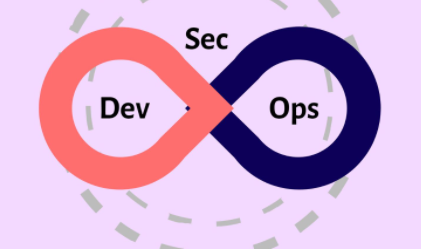DevOps is a term for a software development methodology that emphasizes the collaboration and communication of both software developers and information technology (IT) professionals while automating the process of software delivery and infrastructure changes.
DevSecOps extends the DevOps philosophy that incorporates security into the entire software development lifecycle. DevSecOps aims to make security a part of the process rather than an afterthought.
The goal of DevSecOps is to ensure that software is securely designed, developed, tested, and deployed. Security must be integrated into the entire software development process from start to finish to be effective.
It’s vital to understand Dev Sec Ops meaning, and how it could be implemented successfully in your environment to scale operative efficiency.

1) Create Security Requirements
The first step to implementing DevSecOps is to establish security requirements for each project you are working on.
These requirements need to include both hard and soft coding standards that all developers must follow and any guidelines and procedures that need to be followed for your production environment.
Your security requirements need to include the following:
• DevOps Basics
Ensure you implement best practices from both the DevOps and security communities and establish a secure deployment pipeline, which is a vital part of implementing DevSecOps.
• Threat modeling
Get everyone involved in threat modeling. Once you have defined the threats, establish how to detect them and mitigate or eliminate risks.
• Staged Deployment Security
Staged deployments are a crucial element of implementing DevSecOps by ensuring that only some servers are updated at any one time, which reduces downtime for your production environment.
2) Implement a Reputable Source Control System
To implement DevSecOps, you need to use source control systems for deploying code. You should implement a reputable source control system with your deployment pipeline so that all of your updates can be tracked and monitored by your team.
Many source control systems offer features to identify differences between updates so you can monitor all changes and keep everyone informed of any new security threats.
3) Establish Partner Programs
Partner program management is an integral part of deploying DevSecOps in your environment. You need to develop partner programs for both your vendors and your customers to ensure that all updates and changes are handled efficiently and securely.
4) Use Escrow Certificates When Necessary
Escrow certificates allow you to establish a “safety net” when deploying new code by providing a secure, if somewhat slower, method of updating production servers.
Even though an escrow certificate takes more time than a direct update, it can help ensure that no changes are made to your production environment without proper authorization and testing.
5) Implement Automated Security Testing
Automated security testing is an essential part of implementing DevSecOps. You need to use automated tools to test your code for vulnerabilities and security issues regularly. This will help you find and fix any security issues before they can cause problems in your production environment.
6) Use a Secure Container Platform
A secure container platform is another essential part of implementing DevSecOps. These platforms help you manage and monitor all containers in your environment, ensuring that each is adequately secured.
They also provide features to help you quickly and easily deploy new containers, essential for a fast-paced DevOps environment.
7) Implement Threat Modeling
To implement DevSecOps, you need to use threat modeling and security testing as part of your deployment pipeline. Threat modeling gives your entire team a way to visualize potential threats and security issues before they become problems in your production environment.
8) Keep Your Code Updated
As with all coding environments, you need to keep your code updated to implement DevSecOps. This means you need to have a plan for releasing new code regularly.
It also helps if you use automated tools to test your updates before they are released so that you can find any potential security issues or bugs before they become problems in your production environment.
9) Get Everyone Involved
DevOps and security are both complex topics, and it’s essential to involve everyone in your organization when you’re trying to implement DevSecOps. This includes your developers and operations staff and your managers, customers, and vendors.
Conduct expert training to help employees understand DevSecOps, its meaning, and strategies. By getting everyone involved, you can ensure that everyone understands the importance of security and working together to keep your production environment safe.
To implement DevSecOps, you need to use source control systems for deploying code. You should implement a reputable source control system with your deployment pipeline so that all of your updates can be tracked and monitored by your team. Many source control systems offer features to identify differences between updates so you can monitor all changes and keep everyone informed of any new security threats.




